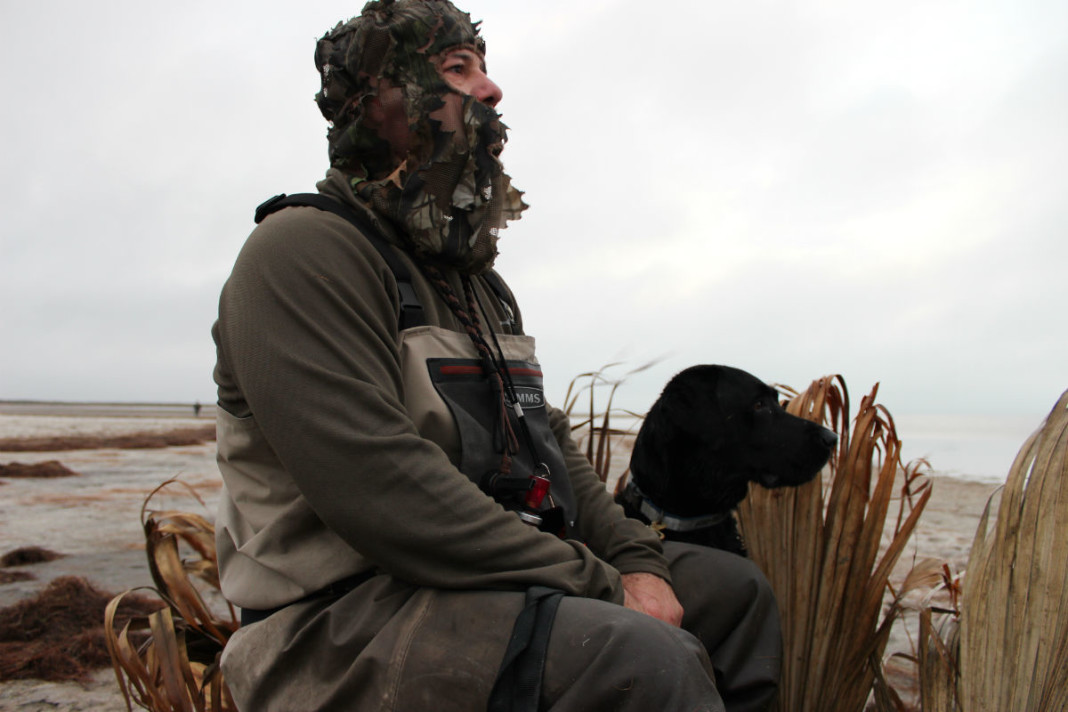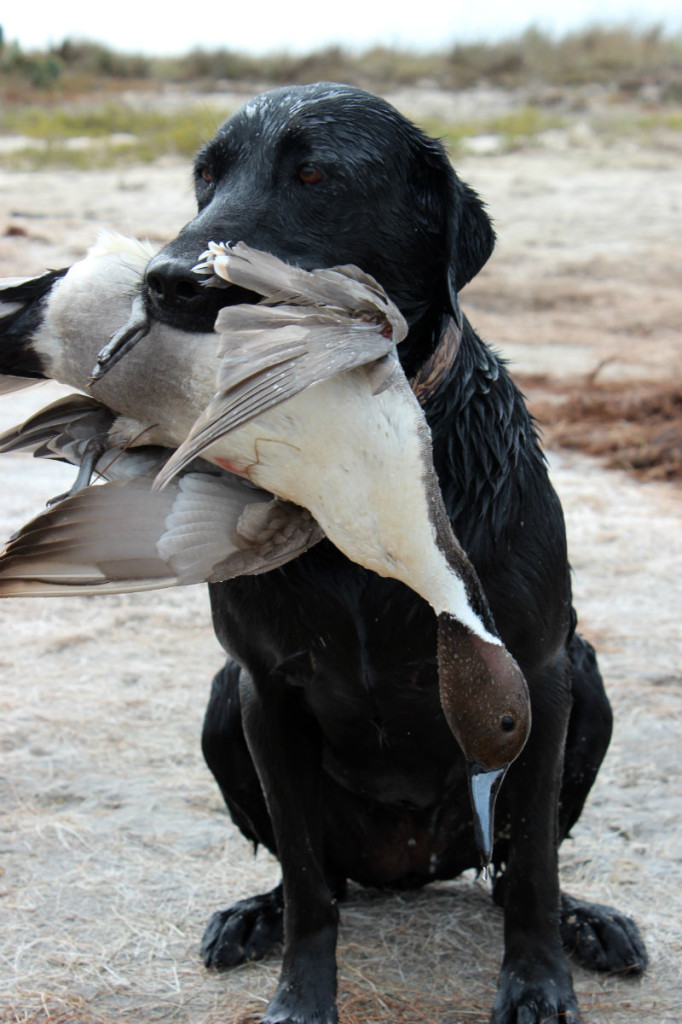On the final day of duck season, Baffin Bay hunting is measured in hours and minutes.
And the clock is ticking.
A looming full moon peeking ominously through faint bands of wispy clouds greets the pair of droning bay boats flanked by the unmistakable mist of salty spray that always hovers distinctly in a steady South Texas breeze during dawn runs.
The watery trek that began in robust splendor on the shore of Cayo del Grullo, which jogged near the boat-wrecking calcified tubes of serpulid worms famous for consistently harboring the largest speckled trout in Texas, slowly dissipates near an island whose name you won’t find on any map. A distinct spiked piece of vegetation rising from its edge marks the site, as if planted purposefully by some intrepid traveler with the singular aim of serving as a familiar waypoint.
Two black Labradors are the first entrants into the muddy shallows littered with undulating sea grass, the dogs’ loping gaits slowed at first by chest-high saltwater that quickly diminishes with each stride toward the beach. The full complement of two sets of dozens of decoys next plops onto the surface, the composite creatures of varying hues methodically dumped into perfect position to entice the genuine article into thinking that this patch of real estate is worth dropping in on.
Along the shoreline palm fronds are spiked into a patchwork arrangement designed to conceal a gaggle of hopeful hunters from prying eyes keen to this particular exercise, their accompanying wings allowing them to inspect a variety of similar setups during their lengthy migration from the cooler north to the sanctuary that is the hypersaline Laguna Madre.
As the bustling toil wraps up, further inspection brings slight alterations to the salty spread in hopes of making the approaching final sunrise even more memorable. The procession then assumes perches clipped into the soggy beach behind the bunker of branches, using the natural element of deposited sea grass to further the disguise.
All the usual suspects are in attendance, veiled in a mixture of camouflage adornment. Benelli, Beretta and even Mossberg are represented along the formation waiting with bated breath in hopes of being the first to see the distinctive silhouettes or hear the distinguishing chatter that makes this whole assignment worth the while.
The first ducks come in high.
Pintails, more than a dozen drakes.
Their whistling peeps are unique, as are the pronounced tails of mature males. The “bull sprigs” don’t seem to care much about the spread – until they alter their flight paths after a rounding pass. The birds lock onto an open area between the decoys which have come to life as slight waves stirred by a gentle breeze roust them. The real ducks hit the deck, dropping in and slowing their descent to a fraction of their natural momentum.
Then, for any number of reasons, the drakes flare outside the danger of shotgun pellets, gaining altitude and velocity before resuming on to their original objective.
Even the misses – or lack thereof – are worth the effort to rise from the rack earlier than absolutely necessary.
It’s the magic of Baffin Bay hunting and duck hunting, and it’s what makes Texas waterfowl country.
From Panhandle playa lakes and Cross Timbers irrigation ponds teeming with rafts of mallards and wigeons to East Texas river bottoms lousy with wood ducks, the opportunities that come during fall and winter frameworks on the Central Flyway are second to none.
The variety of Lone Star State hunting locales is only upstaged by our distinct ecosystems, some of which feature the genuine possibility of encountering any of 10 species of duck on a given morning. That habitat – and protecting it – is key to hunting prospects looking toward the future of the pastime.
Surveys conducted each January during the past decade along the coast show that nearly 2 million ducks winter there each year, according to Texas Parks and Wildlife Department reports. Surveys of the High Plains region also show that more than a half-million ducks winter there annually, including more than a third of the pintails in the Central Flyway.
Among the largest threats to waterfowl habitat is urban expansion, including the creation of reservoirs to meet water demands and power needs. East Texas bottomlands, which harbor more than three-quarters of a million ducks each winter, are being lost at a higher rate than other state sites – an estimated 70 percent of that viable habitat already cleared, according to TPWD figures.
Moving forward, as generations continue to pass on the tradition, conservation groups and hunters will be called upon to do more and get creative in their approaches to ensure that there remain viable hunting opportunities. That chiefly means protecting wetland resources which quickly can be diminished – even by natural effects.
This year was a clear example of how rapidly critical habitat can be scaled back. The recent fall and winter seasons had shaped up to be the best that duck hunters have ever seen, according to the annual U.S. Fish and Wildlife Service waterfowl breeding survey, which showed a record estimate of 48.6 million ducks, an increase over last year’s previous high of 45.6 million.
However, any biologist worth their salt will tell you that we hunt the fall flights, not the spring counts, and even though there were a record number of birds, the future is tinged with a dose of cynicism in the form of a decline in breeding habitat. Southern waterfowl hunting success rests on the waters of northern prairie ponds and wetlands, which saw a decline in a number of key areas during the past year.
The overall U.S. and Canadian pond count dropped from more than 8 million to about 5.5 million, according to waterfowl surveys, which likely will have a negative impact on this year’s spring duck count if drought conditions continue as they have in recent seasons. There’s no real long-term concern among biologists, but the habitat decrease does mean that there will be fewer young birds in next year’s flocks, something that tends to make hunting difficult.
That being said, nothing about waterfowl hunting is easy.
And those of us who revel in the pursuit wouldn’t have it any other way.
For more information on South Texas duck hunting and saltwater fishing, visit www.baffinbayrodandgun.com.





















